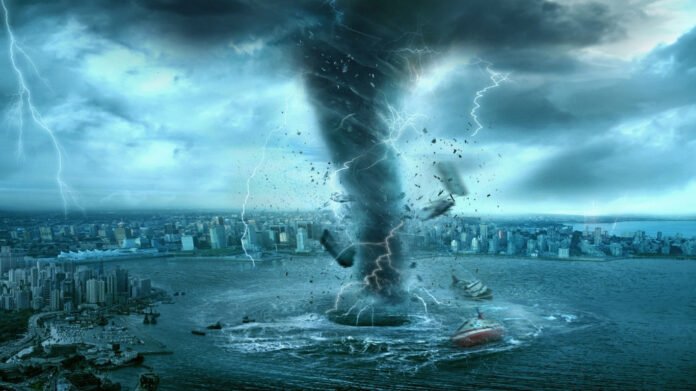Hurricanes and the resulting floods relentlessly batter the southeastern United States, especially the vulnerable coastal regions of Carolina and Florida. Positioned along the Atlantic Coast and Gulf of Mexico, these states are frequently targeted by violent tropical storms that unleash havoc on both lives and infrastructure. This article delves into the catastrophic consequences of recent hurricanes in these regions, the overwhelming challenges they present, and the unrelenting recovery efforts that follow.
Recent Hurricanes: Nature’s Fury Unleashed
Hurricane Idalia (2023): Ferocious Winds and Surging Floodwaters
In August 2023, Hurricane Idalia roared ashore near Florida’s Big Bend as a Category 3 storm, tearing through communities with winds exceeding 125 mph (201 km/h). Coastal towns were inundated by a powerful storm surge, with waves exceeding 8 feet, reducing streets to rivers and homes to debris. Entire neighborhoods were left in disarray, and power outages plunged millions into darkness. As Idalia churned northward, it continued to dump relentless rainfall on South Carolina and North Carolina, flooding towns, overwhelming rivers, and severing critical roadways.
Hurricane Ian (2022): Unprecedented Destruction
The devastation from Hurricane Ian in 2022 still lingers in memory. Ian made landfall in southwest Florida, obliterating everything in its path, including Fort Myers and Sanibel Island. It dumped over 20 inches of rain across central Florida, turning highways into lakes and homes into waterlogged ruins. After cutting a deadly path through Florida, Ian barreled into South Carolina, battering Charleston and Myrtle Beach with unrelenting rain and storm surges. The aftermath left residents traumatized, with repair efforts still ongoing in many areas.
The Devastating Impact of Hurricanes and Flooding
1. Severe Flooding in Coastal and Inland Areas
Hurricanes unleash relentless downpours that overwhelm drainage systems and elevate rivers beyond capacity, triggering widespread floods. Low-lying cities such as Charleston and Miami are highly vulnerable. In Jacksonville and Tampa, neighborhoods are often submerged, isolating residents and endangering those who fail to evacuate. The storm surges—massive walls of seawater pushed ashore—compound these floods, drowning coastal regions under several feet of water.
2. Infrastructure Collapse
The combined assault of wind and water leaves roads fractured, bridges compromised, and electrical grids in tatters. Power outages lasting days—or even weeks—cripple residents and first responders, leaving millions without air conditioning, clean water, or communication systems. Hospitals and emergency services struggle to operate under these harsh conditions, placing further strain on communities trying to navigate the crisis. Essential businesses close, and supply chains grind to a halt, disrupting the delivery of fuel, groceries, and medicines.
3. Health and Environmental Hazards
Floodwaters contaminated with sewage, chemicals, and industrial waste infiltrate drinking water systems, posing grave health risks. Mold growth festers in flooded homes, creating respiratory hazards for returning residents. Mosquito infestations spike as standing water becomes breeding grounds for disease-carrying insects, heightening the risk of West Nile virus and dengue fever outbreaks. Beyond physical dangers, hurricanes also take an immense psychological toll on survivors, many of whom battle anxiety, depression, and post-traumatic stress.
Resilient Recovery and Long-Term Mitigation Efforts
1. Federal and State Mobilization for Relief
The Federal Emergency Management Agency (FEMA) spearheads post-hurricane recovery efforts alongside state authorities. Immediate responses include search-and-rescue operations, food and water distribution, and emergency shelters for displaced residents. Both Florida and the Carolinas have honed sophisticated evacuation strategies, with advanced early-warning systems enabling people to escape danger zones in time.
Financial aid programs assist homeowners and business owners in rebuilding shattered lives, but bureaucratic bottlenecks can complicate access to these vital resources. In many cases, residents must rely on non-profit organizations and local volunteer groups to fill gaps left by overwhelmed government systems.
2. Fortifying Infrastructure Against Future Disasters
Communities are increasingly recognizing that rebuilding stronger is essential for future survival. In Charleston, investments in elevated roadways, new drainage systems, and seawalls aim to counteract rising sea levels. Meanwhile, Miami is incorporating advanced flood control systems and stricter building codes, requiring hurricane-resistant materials and elevated home foundations. Florida’s strategy also includes reinforcing stormwater management systems to prevent catastrophic flooding during future events.
3. Preparedness and Community Engagement
Public awareness campaigns and community-led initiatives are making a tangible difference in disaster preparedness. Annual hurricane drills and emergency preparedness kits are now commonplace, helping residents react swiftly when storms strike. The strength of community solidarity plays a crucial role in recovery, with neighbors helping neighbors rebuild homes, organize relief efforts, and foster emotional resilience in the aftermath.
Strength in the Face of Nature’s Fury
The residents of Carolina and Florida endure relentless hurricanes, demonstrating unwavering courage and tenacity in the face of each new disaster. As climate change accelerates, these storms are growing more frequent and intense, challenging communities to adapt swiftly and effectively. However, the resilience of the people, coupled with innovations in disaster preparedness and infrastructure, ensures that they will continue to rise stronger after each storm.
Hurricanes and floods may leave destruction in their wake, but they also reveal the indomitable spirit of those affected. With coordinated recovery efforts, strategic planning, and the unwavering determination of individuals, the people of Florida and the Carolinas will not only rebuild but thrive. Their ability to endure and overcome in the face of nature’s wrath serves as a testament to the power of community and hope.



